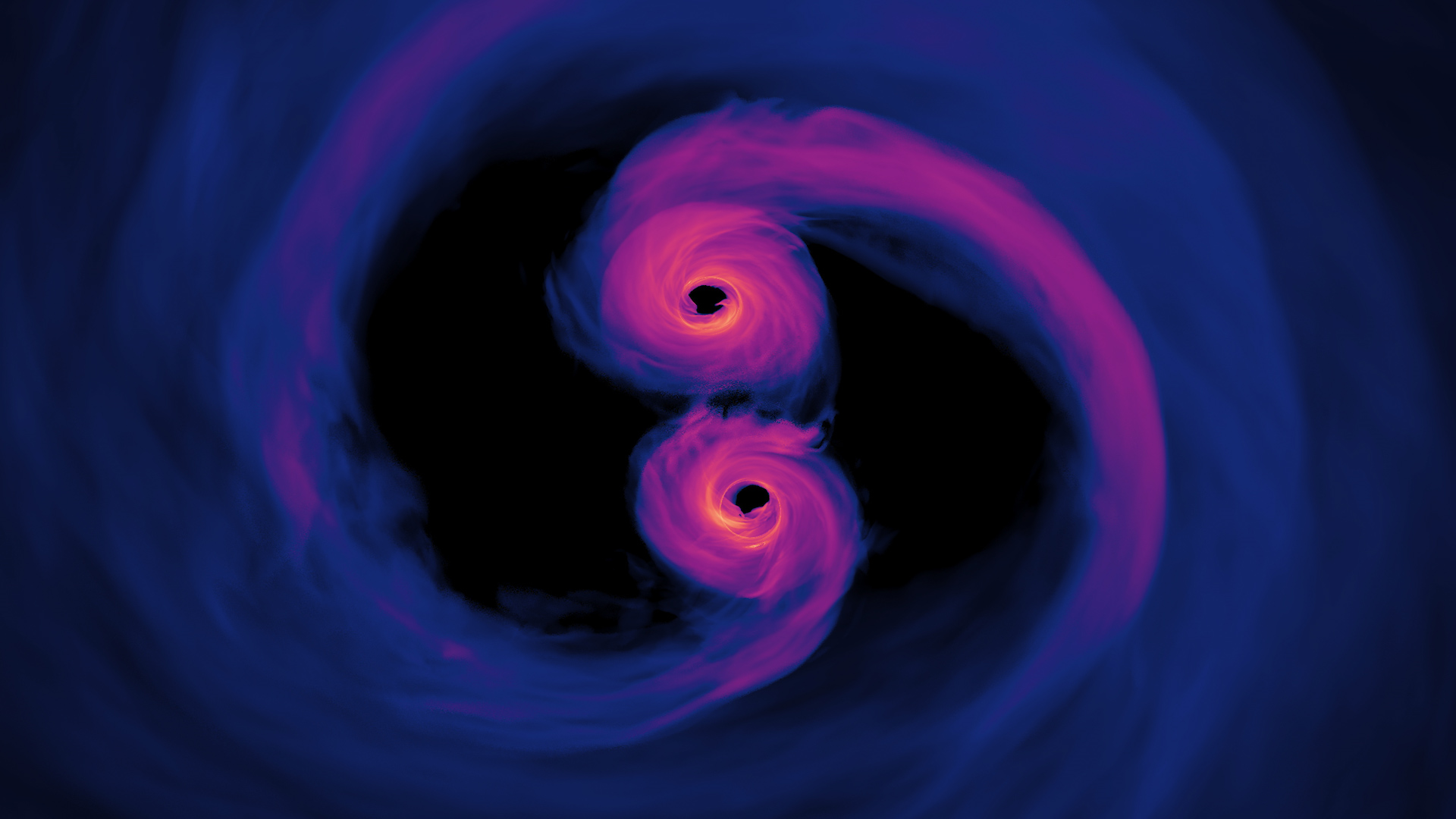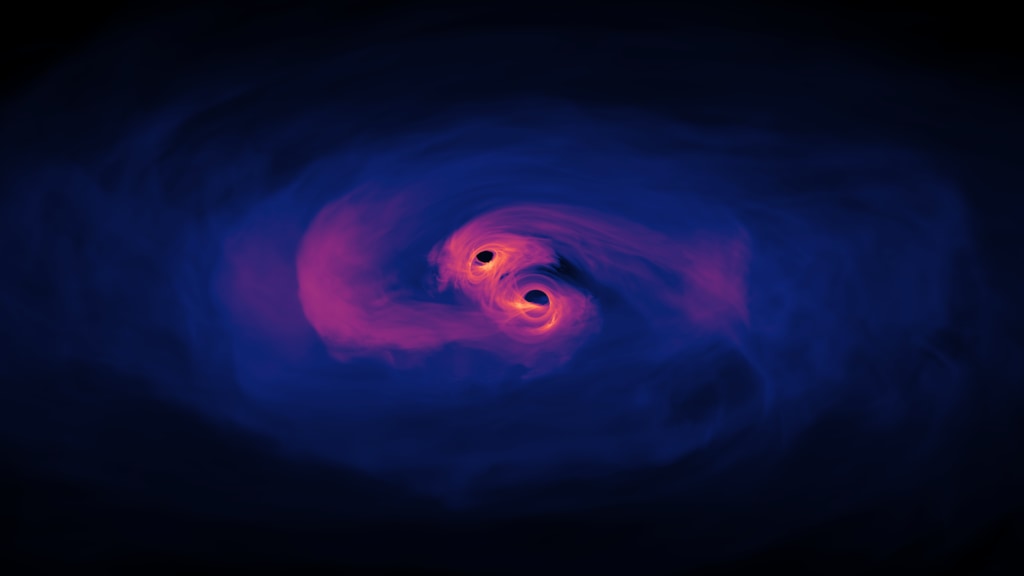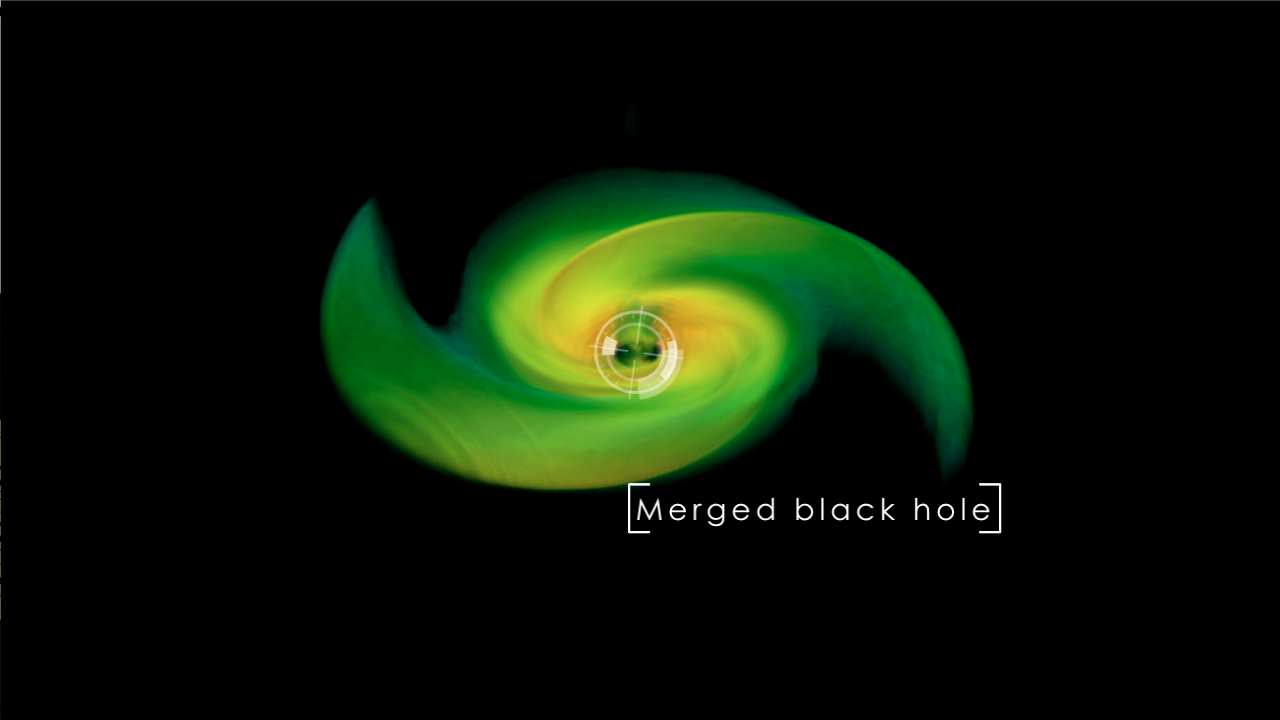NASA-led Study Explains How Black Holes Shine in Hard X-rays
A new study by astronomers at NASA, Johns Hopkins University and the Rochester Institute of Technology confirms long-held suspicions about how stellar-mass black holes produce their highest-energy light.
By analyzing a supercomputer simulation of gas flowing into a black hole, the team finds they can reproduce a range of important X-ray features long observed in active black holes. Jeremy Schnittman, an astrophysicist at NASA's Goddard Space Flight Center in Greenbelt, Md., led the research.
Black holes are the densest objects known. Stellar black holes form when massive stars run out of fuel and collapse, crushing up to 20 times the sun's mass into compact objects less than 75 miles (120 kilometers) wide.
Gas falling toward a black hole initially orbits around it and then accumulates into a flattened disk. The gas stored in this disk gradually spirals inward and becomes greatly compressed and heated as it nears the center, ultimately reaching temperatures up to 20 million degrees Fahrenheit (12 million C), or some 2,000 times hotter than the sun's surface. It glows brightly in low-energy, or soft, X-rays.
For more than 40 years, however, observations show that black holes also produce considerable amounts of "hard" X-rays, light with energy tens to hundreds of times greater than soft X-rays. This higher-energy light implies the presence of correspondingly hotter gas, with temperatures reaching billions of degrees.
The new study involves a detailed computer simulation that simultaneously tracked the fluid, electrical and magnetic properties of the gas while also taking into account Einstein's theory of relativity. Using this data, the scientists developed tools to track how X-rays were emitted, absorbed, and scattered in and around the disk.
The study demonstrates for the first time a direct connection between magnetic turbulence in the disk, the formation of a billion-degree corona above and below the disk, and the production of hard X-rays around an actively "feeding" black hole.
Watch this video on YouTube.
This animation of supercomputer data takes you to the inner zone of the accretion disk of a stellar-mass black hole. Gas heated to 20 million degrees F as it spirals toward the black hole glows in low-energy, or soft, X-rays. Just before the gas plunges to the center, its orbital motion is approaching the speed of light. X-rays up to hundreds of times more powerful ("harder") than those in the disk arise from the corona, a region of tenuous and much hotter gas around the disk. Coronal temperatures reach billions of degrees. The event horizon is the boundary where all trajectories, including those of light, must go inward. Nothing, not even light, can pass outward across the event horizon and escape the black hole.
Music: "Lost in Space" by Lars Leonhard, courtesy of artist.
For complete transcript, click here.
This animation of supercomputer data shows low-energy (soft) X-ray emission from the inner accretion disk of a stellar-mass black hole. Infalling gas is compressed and heated to millions of degrees as it swirls toward the inner edge of the disk, where the orbital speed approaches the speed of light. Magnetic fields threading through the gas are dramatically amplified. They affect the motion of the ionized gas, resulting in complex, turbulent motion. The left side of the disk appears brighter than the right because the energy of light emitted by gas approaching us (left) is increased by the Doppler shift, while the energy of light emitted in gas moving away from us (right) is decreased. We view the scene from a perspective 45 degrees above the accretion disk.
Credit: NASA's Goddard Space Flight Center/J. Schnittman, J. Krolik (JHU) and S. Noble (RIT)
This animation of supercomputer data shows high-energy (hard) X-rays radiated from the corona region above the accretion disk of a stellar-mass black hole. The corona is a tenuous gas above and below the disk with temperatures reaching billions of degrees. The contrast between the left and right sides of the image, caused by the Doppler shift, is much less pronounced than in the disk movie. This is because the random motions of particles in the corona are as fast as their orbital speed, which reduces the contrast. Particles in the corona scatter soft X-rays from the disk and give them an energy boost, resulting in hard X-ray emission. We view the corona from a perspective 45 degrees above the plane of the accretion disk.
Credit: NASA's Goddard Space Flight Center/J. Schnittman, J. Krolik (JHU) and S. Noble (RIT)
This animation of supercomputer data shows both low-energy X-rays (red) from the inner accretion disk and high-energy X-rays (blue) from the inner corona of a stellar-mass black hole. Particles in the corona scatter soft X-rays from the disk and give them an energy boost, resulting in hard X-ray emission. We view the scene from a perspective 45 degrees above the plane of the accretion disk.
Credit: NASA's Goddard Space Flight Center/J. Schnittman, J. Krolik (JHU) and S. Noble (RIT)

This annotated image labels several features in the simulation, including the event horizon of the black hole.

This illustration shows the approximate relationships between the black hole, its accretion disk (red), and the viewpoint and field of view of the simulation.

This illustration shows the paths of soft X-rays (arrows) from the underside of the accretion disk that form rings seen near the black hole in the simulation.

This illustration shows the approximate relationships between the black hole, its accretion disk and the corona region (blue). The arrows show a soft X-ray (red) traveling into the corona and striking a particle moving near the speed of light. The collision scatters the light and boosts it to much higher energy, making it a hard X-ray. This process is known as inverse Compton scattering.
This animation illustrates inverse Compton scattering. In the corona region above a black hole's accretion disk, electrons and other particles move at appreciable fractions of the speed of light. When a low-energy X-ray (red) from the disk travels through this region, it may collide with one of the fast-moving particles (in this case, an electron). The impact scatters the light while simultaneously boosting its energy into the hard X-ray (blue) regime.
For More Information
Credits
Please give credit for this item to:
NASA's Goddard Space Flight Center. However, individual images should be credited as indicated above.
-
Animator
- Scott Wiessinger (USRA)
-
Video editor
- Scott Wiessinger (USRA)
-
Producer
- Scott Wiessinger (USRA)
-
Scientist
- Jeremy Schnittman (NASA/GSFC)
-
Writer
- Francis Reddy (Syneren Technologies)
Release date
This page was originally published on Friday, June 14, 2013.
This page was last updated on Wednesday, May 3, 2023 at 1:52 PM EDT.
Series
This visualization can be found in the following series:Tapes
This visualization originally appeared on the following tapes:-
First Principles Black Hole Simulation
(ID: 2013023)
Tuesday, June 11, 2013 at 4:00AM
Produced by - Robert Crippen (NASA)



